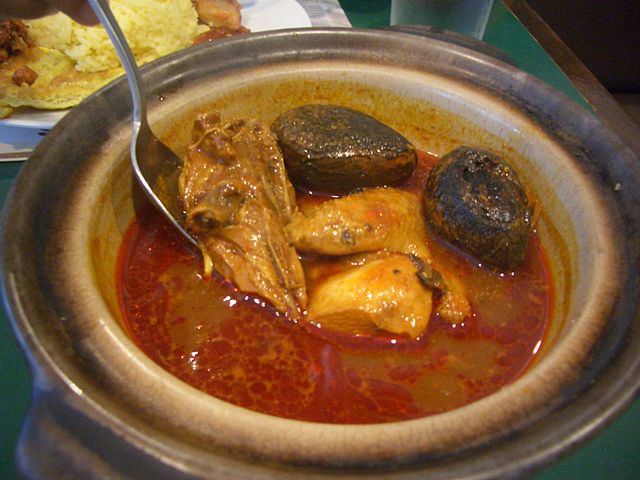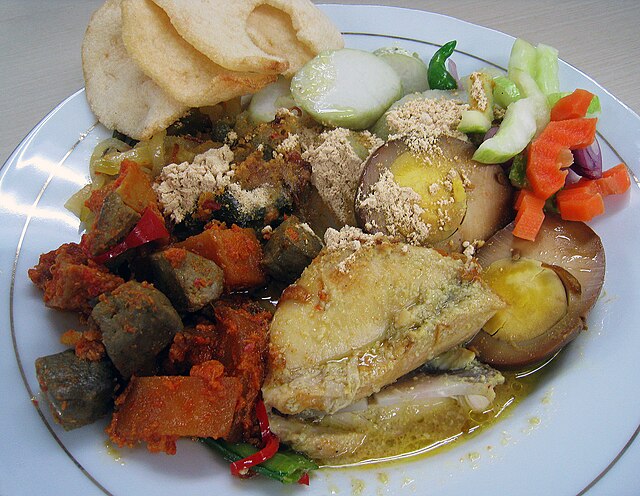Peranakan cuisine or Nyonya cuisine comes from the Peranakans, descendants of early Chinese migrants who settled in Penang, Malacca, Singapore and Indonesia, inter-marrying with local Malays. In Baba Malay, a female Peranakan is known as a nonya, and a male Peranakan is known as a baba. The cuisine combines Chinese, Malay, Javanese, South Indian, and other influences.
Chicken with keluak
Laksa
Lontong cap go meh
Sambal belacan
The Peranakan Chinese are an ethnic group defined by their genealogical descent from the first waves of Southern Chinese settlers to maritime Southeast Asia, known as Nanyang, namely the British Colonial ruled ports in the Malay Peninsula and the Indonesian Archipelago, as well as Singapore. Peranakan culture, especially in the dominant Peranakan centres of Malacca, Singapore, Penang, Phuket and Tangerang, is characterized by its unique hybridization of ancient Chinese culture with the local cultures of the Nusantara region, the result of a centuries-long history of transculturation and interracial marriage.
A photograph of Peranakan wedding couple – Chung Guat Hooi, the daughter of Kapitan Chung Thye Phin and Khoo Soo Beow, the son of Khoo Heng Pan, both of Penang – from a museum in Penang
Two Peranakan women at a tin factory in Pulau Singkep, Riau Islands.
Tjhit Liap Seng (1886) by Lie Kim Hok was considered the first Chinese Malay novel.
Hok An Kiong Chinese Temple, Jalan Coklat, Surabaya c. 1900 – 1920. Large Chinese communities were already present in Java when the Dutch arrived just before the 1600s. Many Chinese had native concubines until a large group of mestizos arose, who spoke Malay or Javanese.








